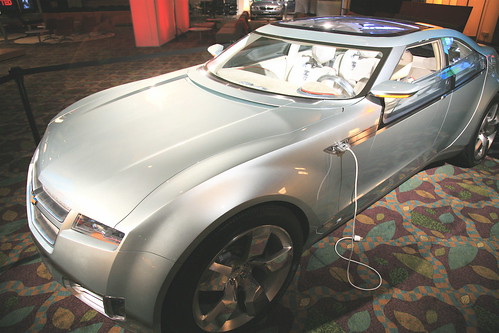Holy Grail of Electric Vehicle Technology? – A Lithium Ion Battery that Charges as Fast as a Supercapacitor
(Source: Treehugger)
Is this the “Holy Grail” Battery We’ve Been Waiting For?
Nature published a very interesting paper by MIT researchers Byoungwoo Kang & Gerbrand Ceder this week: Battery materials for ultrafast charging and discharging. In it they claim that they have discovered a way to make a lithium iron phosphate (LiFePO4) battery charge and discharge about as fast as a supercapacitor. In practice, this could make plug-in hybrids and electric cars much more practical.
The Nature article states, “Lithium-ion batteries are commonplace in everything from mobile phones to hybrid vehicles. “They’re essentially devices that move lithium ions between electrodes,” says Ceder. The batteries generate an electric current when lithium ions flow out from a storage electrode, float through an electrolyte, and are chemically bound inside the opposing cathode. To recharge the battery, the process is reversed: lithium ions are ripped from the cathode compound and sent back to be trapped in their anode store.
The speed at which a battery can charge is limited by how fast its electrons and ions can move – particularly through its electrodes. Researchers have boosted these rates by building electrodes from nanoparticle clumps, reshaping their surfaces, and using additives such as carbon. But for most lithium-ion batteries, powering up still takes hours: in part because the lithium ions, once generated, move sluggishly from the cathode material to the electrolyte.”
Here is the abstract of their paper:
The storage of electrical energy at high charge and discharge rate is an important technology in today’s society, and can enable hybrid and plug-in hybrid electric vehicles and provide back-up for wind and solar energy. It is typically believed that in electrochemical systems very high power rates can only be achieved with supercapacitors, which trade high power for low energy density as they only store energy by surface adsorption reactions of charged species on an electrode material. Here we show that batteries which obtain high energy density by storing charge in the bulk of a material can also achieve ultrahigh discharge rates, comparable to those of supercapacitors. We realize this in LiFePO4 (ref. 6), a material with high lithium bulk mobility, by creating a fast ion-conducting surface phase through controlled off-stoichiometry. A rate capability equivalent to full battery discharge in 10–20 s can be achieved.
Click here to read the entire article.






